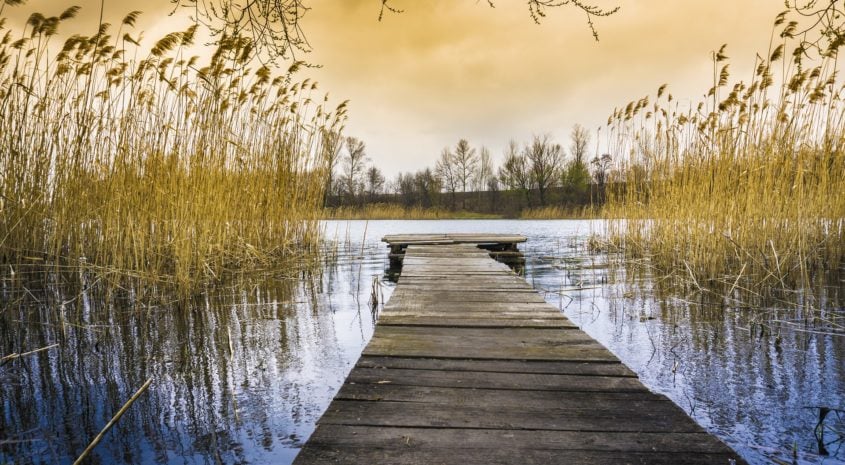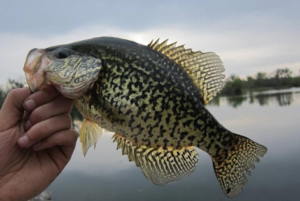Author: Coltyn Bettis Land Specialist at UC Midwest Lifestyle Properties
Stock ponds add beauty and recreation to your property, not to mention giving support to possible livestock. Ponds also attract and sustain other wildlife, adding to its peaceful attractiveness. Whether you are new to stock ponds, already have a pond on your hunting property or your country acreage, keeping your stock pond healthy is very important.
HABITAT
Keeping a stock pond happy and healthy requires providing your fish with good habitats. Fish like areas that they can hide from predators, rest and spawn in safety. Today we will tackle creating a habitat for your stock pond.
When creating habitats for your fish you need to keep in mind several things:
- cleanliness
- fish safety
- production

With these three items in mind, we can determine what is best for your stock pond. Some folks like artificial habitats and others like natural habitats. With advances in technology, the ability to create ecologically friendly materials for the artificial habitats world has expanded with great results.
ARTIFICIAL THE WAY TO GO
According to thePondguy website, artificial habitats in stock ponds are the cleanest, easiest way to provide fish with a safe and productive environment. If you are a DIY person, this would be an excellent opportunity to make your own artificial habitats.
There are many ideas and directions for the DIY folks. These are generally cheaper than ordering artificial habitats online. Many of the DIY items are made with PVC piping, 5-gallon buckets, cement, drip house tubing and alike. These can become great family projects and instill a love for conservation and its environment.
Be sure and check with your state and local agencies to make sure your structures comply with any regulatory rules. Your DIY items should be environmentally friendly
Here are some great Youtube videos to check out for DIY artificial fish habitats:
- https://www.youtube.com/watch?v=r4J_HDl8oxg
- https://www.youtube.com/watch?v=zSDG_jXoAIg
- https://www.youtube.com/watch?v=IRiiUlk7Rdo
If you are pressed for time and have the cash to spend, below are several online businesses to help you with your artificial fish habitats:
- https://www.thepondguy.com/product/pond-king-honey-hole-trees/pond-and-lake-fish-care-fish-habitat
- https://pondking.com/collections/fish-habitat
- https://www.mossbackfishhabitat.com/
NATURAL HABITATS A GOOD OPTION AS WELL
One would think that all “natural” habitats are best, but the downside to natural habitats, like wood, eventually they break down and add to the “muck” in your pond.
Muck is plant and animal waste that breaks down and lies at the bottom of your pond. This muck feeds algae and aquatic plants growing in your pond.
Rocks, boulders and cinder blocks make wonderful places for fish to hide away and rest. They also offer areas for algae to grow. Rocks and boulders will also break the flow into your pond if you have a small stream or river flowing into it.
Christmas trees make excellent natural habitats for fish. The tight limbs and random branching make attractive places for fish to hide in. Several sites also suggest that Christmas tree trunks should be put through the openings of a cinder block and securely tied. This helps keep the tree submerged and is best done in groups. Submerged trees decay slower than exposed trees. Here are just a few site suggestions:
- https://www.bassresource.com/fish_biology/tree_structure.html
- https://www.youtube.com/watch?v=z7iAoyHPfCw
It is important to understand the necessity of aquatic plants in your pond. Plants in your pond are considered oxygenators. They supply oxygen just like trees. These plants absorb carbon dioxide and release oxygen. In addition to providing oxygen, they also help with pond housekeeping, prevent erosion and provide shelter for little fish and tadpoles.
Some plants are submerged and some plants float. Though floating plants do not do much to help with oxygenation, they do help provide shade and break the intensity of the sun- thereby helping control the temperature and water evaporation.
Native plants still need to be monitored. Some have a tendency to take over and push other natives out. The https://pondmegastore.com/pages/native-pond-plants-natural-earth-ponds has you enter your state to automatically remove (from their suggestions) anything that would be considered invasive where you live. Check out their informational video here: https://www.youtube.com/watch?v=-PE5-5N1whE#action=share
Stay tuned for more Pond 101 articles dealing with fish introduction, planning for your plants, as well as the lifecycle of your pond.
Resources:
- https://www.thepondguy.com/product/learning-center-pl-tips-for-fish-stocking/learning-center-pl-fish-care
- https://www.fishiding.com/recent-fish-habitat-news/artificial-fish-habitat-or-fish-attractors-which-do-the-fish-need-and-why/
- https://www.welcomewildlife.com/native-plants-for-a-pond/



